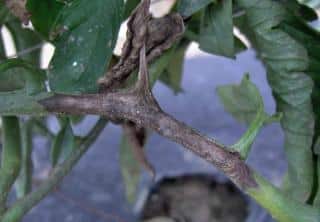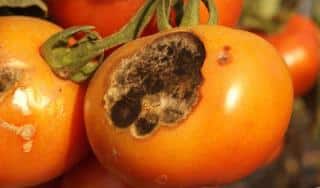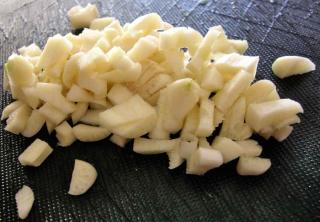

This blight is a true plight! Early blight covers tomato plants with black spots, and even makes the fruits inedible. From trying to avoid in the first place, to treating it with natural treatments, discover how to deal with this disease while using only completely organic techniques!
Discover also:
Early blight is a fungal disease. This means it’s caused by a type of mushroom. The culprits are: Alternaria solani (for the tomato specifically) and Alternaria alternata ! As is the case for all fungus, they tend to appear when the air is warm and moist. Although this disease most often infects tomato plants, it can also impact potato, red beet, fruit trees, cabbage, carrot and eggplant. These particular mushrooms stay dormant in the soil, and they easily survive winter colds. They spread through various means: rain, wind, contact with contaminated soil, sick plants or infected seeds. When the air become loaded with warm moisture, spore germinate and quickly infect tomato plants.

 Avoid wetting the leaves when watering. A good idea is to use a cut plastic bottle as a funnel, stuck into the ground near the foot of the plant. That way you can water without getting water on the leaves.
Avoid wetting the leaves when watering. A good idea is to use a cut plastic bottle as a funnel, stuck into the ground near the foot of the plant. That way you can water without getting water on the leaves.
Still more prevention is possible to offset the disease’s appearance: fermented tea, weed decoctions and plant infusions will reinforce plant immune systems, help them develop strong roots, and will boost growth and fruit formation.
This natural fungicide is sprayed on vulnerable plants. Never use it pure: you’ve got to dilute it to a 10% mix (9 volumes water for 1 volume pure tea). Use it to water the plants, once or twice a month. It’s easy to prepare yourself, but you can also find it in garden stores nowadays.
Garlic has both antifungal and antibacterial properties. Use it to prevent fungal diseases such as early blight. Prepare a batch of garlic infusion yourself at home, all you need is a large cooking pot.
 Thinly chop a pound of garlic (500g).
Thinly chop a pound of garlic (500g).This bacteria is used to colonize space on leaves and thus keep Alternaria alternata fungus from taking hold. It’s a bacteria that also secretes anti-fungal compounds that block spore germination.
There are no curative treatments against Alternaria solani fungus, the one that impacts tomato. Regarding the other species – tomato, red beet, and citrus species, there is a treatment that helps eradicate Alternaria alternata. It’s actually another fungus called Aureobasidium pullulans that competes directly with Alternaria for space and nutrients. As for infected tomato plants, there’s no choice but to eliminate diseased specimens and carefully apply all the preventive measures to keep the disease from spreading any further.
Hi,
I definitely have early blight on many of my garden plants. It seems to be spreading quickly to different species. It first started last year with all the rain we had in spring and early-mid summer. My tomatoes and aubergines contracted it first, I then noticed it was starting to spread to my clematis and a couple of other bin related species. This year it has smothered both my wonderful hydrangeas, has spread to my delphiniums, lupins, strawberry plants, my rosemary bush, margarum, also my alstroemeria and possibly even my hemerocalis (excuse the spelling… I’m neurodivergent.) Will the Aureobasidium pullulans be sufficient to treat these plants before it spreads further? Where can you get it?
Please help me save my precious plants that I’ve nurtured from young, grown from seed or spent a long time loving. 😔 I’m usually giving gardening advice but I have to say this early blight has stumped me and I’ve not had the health or energy last year or this year to do more tgan spray an organic copper treatment which didn’t seem to work.
Many thanks.